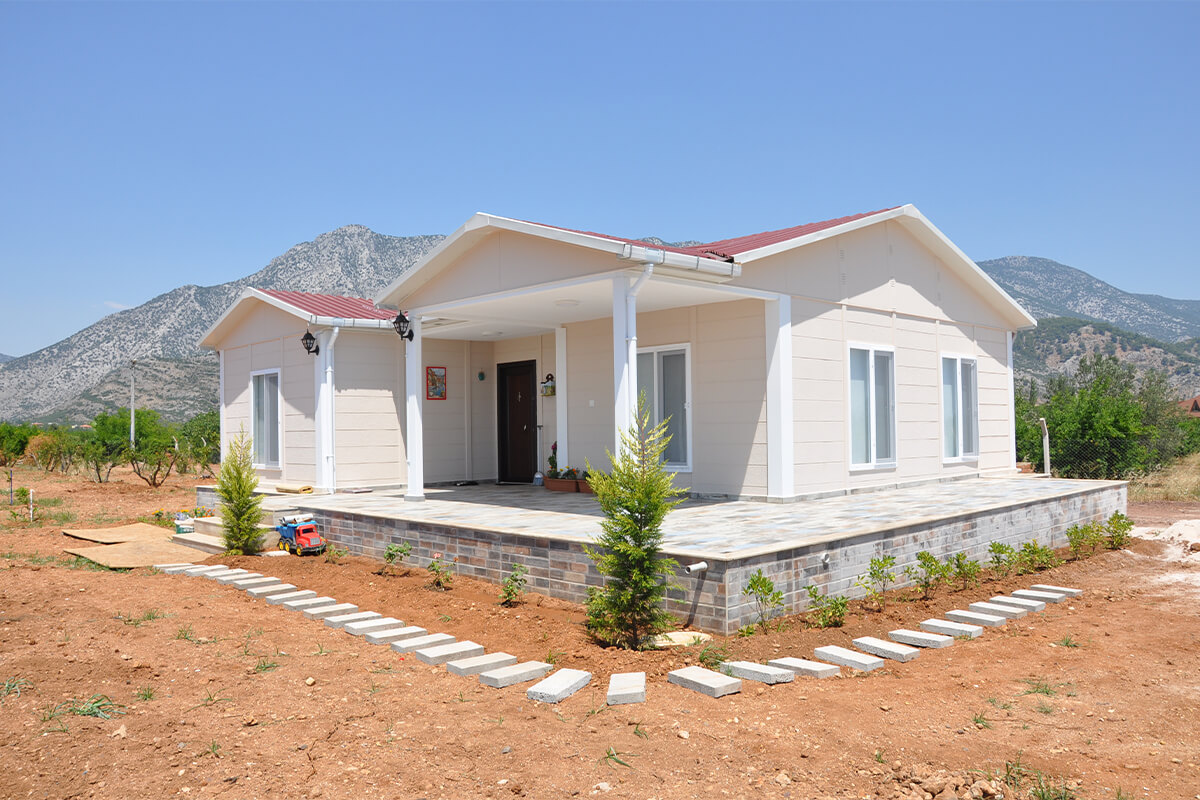Prefabricated Homes vs. Traditional Construction in Nigeria
The Nigerian real estate industry is evolving rapidly, with increasing interest in alternative building methods.
One of the most debated topics is whether prefabricated homes offer a better alternative to traditional construction.
As urbanization accelerates and housing demand soars, many Nigerians are exploring modern, cost-effective, and time-saving ways to build homes.
This article will compare prefabricated homes and traditional construction in Nigeria, evaluating their cost, durability, sustainability, speed of construction, and overall feasibility.
What Are Prefabricated Homes?
Prefabricated homes, also called modular homes or prefab houses, are built off-site in a factory-controlled environment and then transported to the construction site for final assembly.
These homes consist of pre-manufactured components that are assembled using advanced building technologies.
Prefabrication minimizes the need for on-site labour and significantly reduces construction time.
Types of Prefabricated Homes
- Modular Homes – Built in large sections and assembled on-site.
- Panelized Homes – Walls and other structural elements are manufactured separately and assembled at the site.
- Container Homes – Made from shipping containers converted into living spaces.
- Pre-cut Homes – Pre-designed and cut materials that are assembled like a puzzle.
Read This: How Much Does POP Ceiling Installation Cost in Nigeria?
What Is Traditional Construction?
Traditional construction involves on-site building from scratch, using materials like cement, concrete blocks, bricks, wood, and steel. This method follows conventional architectural and engineering techniques and is commonly used for most residential and commercial buildings in Nigeria.
Key Features of Traditional Construction
- Relies on a workforce of artisans, including bricklayers, carpenters, and masons.
- Uses materials sourced locally or imported.
- Construction is done gradually, following standard engineering and architectural practices.
- The process is labour-intensive and takes several months or years, depending on the project size.
Comparing Prefabricated Homes and Traditional Construction in Nigeria
1. Cost Comparison
- Prefabricated Homes: The cost of prefabricated homes can be 30-50% lower than traditional construction. Since components are manufactured in bulk in a controlled environment, there is less waste, lower labor costs, and minimal site disruption.
- Traditional Construction: Higher costs due to labor-intensive processes, fluctuating material prices, and project delays caused by weather or material shortages.
Verdict: Prefabricated homes are generally more cost-effective.
2. Construction Time
- Prefabricated Homes: Since most work is done off-site, construction time is significantly shorter. A prefabricated home can be completed within weeks or months.
- Traditional Construction: Depending on the complexity, traditional homes can take six months to several years to complete.
Verdict: Prefabricated homes are much faster to build.
3. Durability and Structural Strength
- Prefabricated Homes: Built to withstand extreme conditions, but some types (such as container homes) may require reinforcements for long-term durability.
- Traditional Construction: Known for durability and stability, especially when high-quality materials and proper engineering techniques are used.
Verdict: Traditional construction has a stronger track record of long-term durability.
4. Customization and Design Flexibility
- Prefabricated Homes: Often have pre-designed templates, but customization options may be limited.
- Traditional Construction: Offers unlimited design possibilities, allowing homeowners to adjust the layout and materials according to their preferences.
Verdict: Traditional construction provides greater customization.
5. Sustainability and Environmental Impact
- Prefabricated Homes: More eco-friendly due to less material waste, reduced carbon footprint, and efficient energy use.
- Traditional Construction: Generates significant waste from on-site material cutting, cement mixing, and other processes.
Verdict: Prefabricated homes are more sustainable.
6. Labor Requirements
- Prefabricated Homes: Requires fewer workers since most construction is done in a factory.
- Traditional Construction: Requires a large workforce, leading to higher labor costs and dependency on skilled artisans.
Verdict: Prefabricated homes reduce labor dependency.
7. Resale Value
- Prefabricated Homes: Some Nigerians may be hesitant to purchase prefabricated homes due to unfamiliarity with the concept.
- Traditional Construction: More widely accepted, which enhances resale value.
Verdict: Traditional homes generally have a higher resale value in the Nigerian market.
See This: How Much do Architects Charge in Nigeria?
Challenges of Prefabricated Homes in Nigeria
Despite their benefits, prefabricated homes face certain challenges in Nigeria:
- Lack of Awareness – Many Nigerians are unfamiliar with prefabricated housing solutions.
- Import Costs – Some prefab materials are imported, increasing costs.
- Regulatory Issues – Nigeria’s building regulations primarily favor traditional construction.
- Limited Skilled Professionals – Few Nigerian construction companies specialize in prefabrication.
- Perception of Low Quality – Some people believe prefab homes are less durable than conventional houses.
Are Prefabricated Homes the Future of Housing in Nigeria?
Given Nigeria’s housing deficit of over 17 million units, prefabricated homes present a viable solution for affordable housing.
The speed, cost-effectiveness, and sustainability of prefab homes make them an attractive option, especially for urban centres like Lagos and Abuja.
However, for prefabricated homes to become mainstream, stakeholders, including the government, real estate developers, and construction firms, must invest in local manufacturing, awareness campaigns, and policy adjustments to support prefab housing.
Read This: How Much Does a Water Heater Installation Cost in Nigeria?
Conclusion
Both prefabricated homes and traditional construction have their advantages and drawbacks. If you prioritize affordability, speed, and sustainability, prefabricated homes are an excellent choice.
However, if you value durability, flexibility, and market acceptance, traditional construction remains the better option.
As technology advances and acceptance grows, prefabricated homes may revolutionize Nigeria’s real estate industry. Whether you opt for a prefab house or a traditional home, the key is to choose a construction method that aligns with your budget, lifestyle, and long-term housing goals.
Which option do you prefer? Share your thoughts in the comments.

